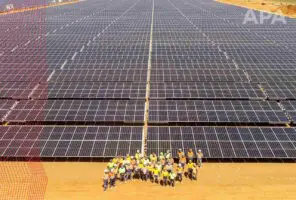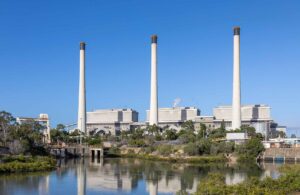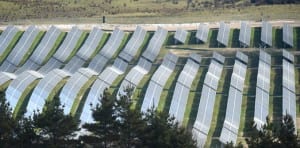EnergyAustralia, the Hong Kong owned company that operates the ageing Yallourn brown coal generator in the Latrobe Valley, agrees with software billionaire Mike Cannon-Brookes: we already have the technologies we need for a reliable, low-cost, low carbon grid.
“The technology exists for a cleaner, reliable and affordable power system,” EnergyAustralia’s CEO Catherine Tanna said in a statement on Monday. “Generators, retailers, regulators, and governments are working together to find the right balance of low-cost, low-carbon emissions technologies and grid reliability.”
And, like Cannon-Brookes last week, EnergyAustralia’s parent company CLP made it clear what those choices were: Wind and solar power, supported by storage, demand response, energy efficient technology, and flexible generation (which could be pumped hydro, batteries, or fast start gas generators)..
It’s not a surprising observation, and it’s one shared by virtually all its utility peers, with the notable exception of the outspoken coal entrepreneur and political donor Trevor St Baker.
But it’s important in the context of the Australian political environment, where the federal government is resisting a push to target zero emissions by 2050, and is insisting that the technologies to effect that transition are not yet at hand.
CLP – which operates in its home base of Hong Kong, China, India and other parts of south-east Asia as well as Australia – says it wants to seize the opportunities of the clean energy transition, and become a “utility of the future. And it says it is clear that the switch to clean energy needs to accelerate because of the impact of the “catastrophic” bushfires in Australia and recent typhoons in Asia.
“As the physical impact of these extreme events become clear, so too are the risks to businesses,” CLP CEO Richard Lancaster said.
“When we formulate measures to reinforce our power systems, we need to plan for very extreme scenarios and make sure that power systems can withstand unprecedented circumstances. We also need to accelerate our transition towards a low-carbon world while continuing to deliver safe, reliable and affordable power to the communities we serve.”
CLP says it has resolved not to make new investments in coal-fired power generators, and to phase them out by 2050. In Australia, the ageing and increasingly unreliable is scheduled to close in 2032, and the Mt Piper coal generator in NSW is struggling to maintain a quality coal supply.
Lancaster said the cost of renewables had come down to the point where subsidies were no longer needed, and an “inflection point” had been reached in China and India. “We’ve reached a point where subsidies are no longer needed and renewable energy can stand alone relative to coal,” he said. The flip side meant that it was now difficult to gain transparency and clarity of the way renewables will be regulated going forward.
The comments were made at the release of EnergyAustralia’s disastrous results for the 2019 calendar year, which saw a 56 per cent slump in earnings to $A295 million, as well as a previously announced $1.2 billion write-off from the goodwill of the company, mostly from the imposition of state and federal pricing controls, and problems at its two major coal units.
EnergyAustralia was a blot on the results landscape of its parent company CLP, the principal cause of a 20 per cent fall in the group’s underlying earnings. And CLP has made it clear that its capital expenditure plans will be focused in coming years on Hong Kong, where it’s closing a coal generator and replacing it with gas.
That will leave little for other regions such as Australia, where it is considering pumped hydro investments such as Cultana in South Australia, and Kidston in Queensland, where it sought to re-draw the terms of an off-take agreement last year – causing a significant delay and uncertainty about that project.
That lack of flexible capacity will continue to cause problems for EnergyAustralia because with its lengthy coal outages it becomes dependent on burning gas, which is more expensive, or buying from the market, which at critical times is also more expensive.
“We are seeing wholesale pries trending lower, but we are also seeing volatile market conditions as more and more renewable energy comes into the market,” Lancaster said. “Fundamentally, the business going forward will have considerable volatility, even though prices will be going down.”
Mt Piper in NSW is faced with a single supply of coal, and the quality of coal that came from one area of the mine was poor. A shift to a new area has improved the quality, but it is still a single source which EnergyAustralia wants to expand – and appears to have been the subject of a bilateral deal between NSW and the federal government for support for transmission infrastructure.

The erosion in its financial the performance hit both the customer base, where it was hit by price controls in its main market of Victoria, and by federal controls across other states – and where it lost 84,000 customers over the year – and in the energy business, thanks to the coal outages and cost of gas.
“While we do not expect the uncertainty of the regulatory environment to ease in the short term, we are managing the change of circumstances strategically,” the company said..








